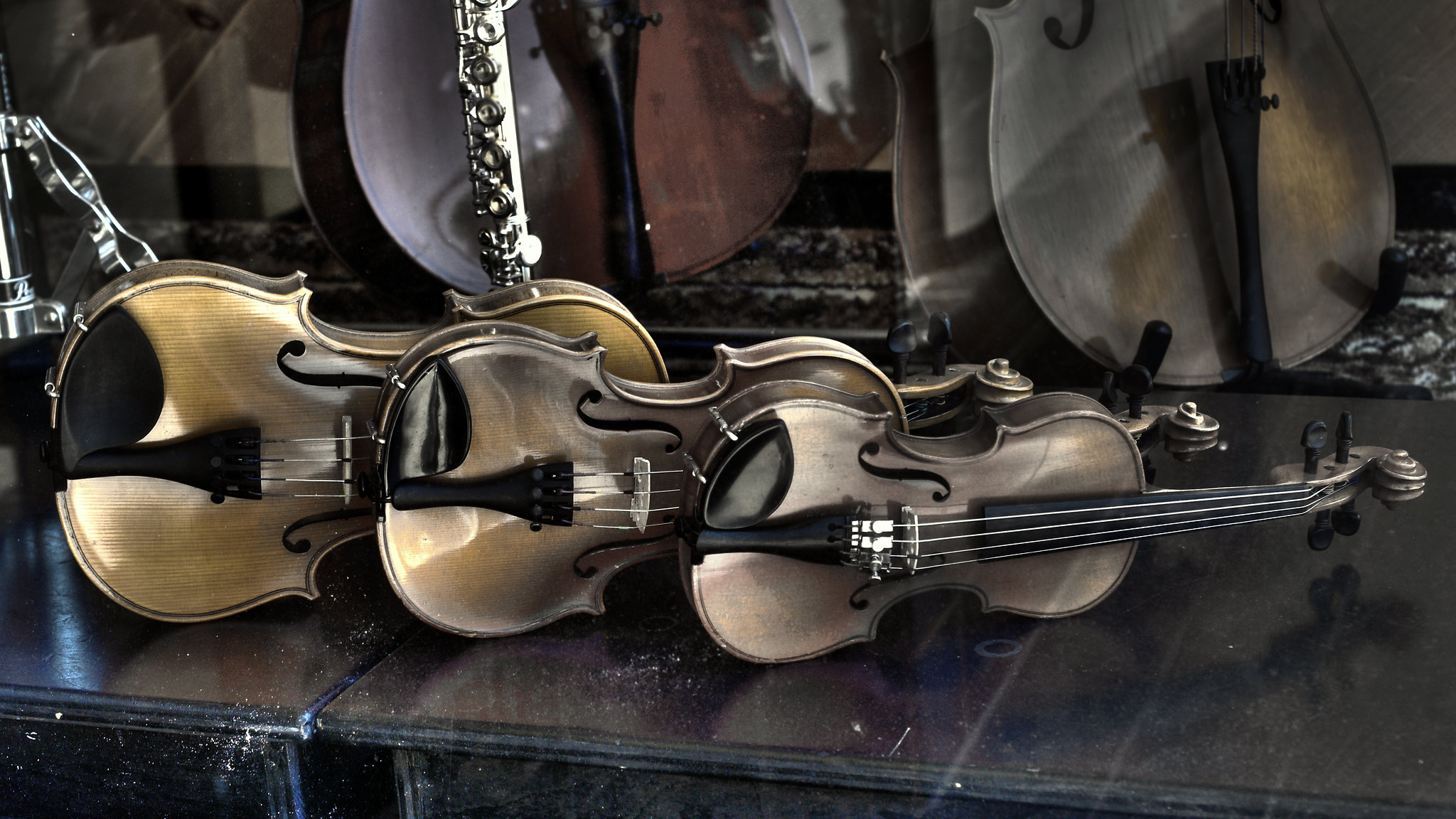People often confuse stringed instruments, mainly because they are so similar in appearance to the untrained eye. The differences between the two instruments, however, are vast, and it’s clear that each instrument is important to a well-rounded string ensemble. In this informative article, we’ll talk about the violin vs. viola and why those differences matter.
Violin and viola sizes
Both violins and violas come in varying sizes. If a small child wants to begin lessons on a violin, they may start their musical journey with a “1/4 size violin.” This is literally one-quarter of the size of a full-size violin. Violins are sized down to as small as 1/16 size, where violas come in a total of 4 different sizes. Regardless, as the musician grows, the instrument will be sized up to meet their physical needs. It’s important to note that many students who are trying to decide which instrument to pursue should consider their hand size: often people with larger hands will benefit from playing the viola, a physically larger instrument! But although it may be beneficial, it’s not critical: there are plenty of people who play the viola whose hands are perfectly average-sized.
Upon reaching young adulthood, most violin and viola students will play a full-size instrument. However, the difference between the two instruments is the sheer size and bulk. Where a full-size violin’s body is about 14” long, a viola is a full 2” longer at up to 16” total. This of course does not include the neck and scroll. In addition to it being longer than the violin, the viola is also wider. The viola, overall, is larger and heavier than a violin. Thus, the sound produced is deeper, more resonant, and more alto than its soprano cousin the violin. To compare the viola with the cello is again a leap in size, texture of sound, and sheer bulk. The jump from cello to bass is another huge leap.
Violin bows are sized fractionally, as discussed above. Viola bows only come in 1 size. Those wishing to use a smaller bow are encouraged to use a violin bow instead of the full-sized viola bow. The only optical difference between the two full-sized instruments’ bows are the squared frog for the violin and the rounded frog for the viola. For all intents and purposes, one could reasonably use either one for either instrument. As long as the quality is high, a rounded or squared frog should not make a difference to a player’s ability to produce music.
Clef reading
Violin music is always written in treble clef where viola music is always written in the alto clef. In fact, violas are the only stringed instrument to use alto clef, which separates it further from other stringed instruments. For this reason, rarely are violinists very well-versed in both violin and viola and the two instruments are not as interchangeable as some people may think. They are truly two very different instruments, complete with different notes that are able to be played. Where a violin’s lowest note that can be played is the G below middle C, a viola is able to play a full octave below middle C, 5 full notes lower than a violin.
Unless a musician is well-versed in both alto and treble clef, it is challenging to easily switch between the two instruments without thought. It would be like asking a Spanish language learner to immediately switch to the French language. Although they share many similarities, they also have many differences.
Strings
Violins and violas, along with cellos and the string bass, piano, and harp, all have specially-made strings that cause them to resonate. This is where the term “stringed instruments” comes from. Violins traditionally have 4 strings: G, D, A, E (listed from lowest pitch to highest pitch). Violas also have 4 strings, but violas are lower-pitched, starting at the C below middle C, and then G, D, A, in ascending order. Both instruments’ strings are tuned one-fourth down or up from one another.
In addition to having different strings and pitches assigned to those strings, violas’ strings are thicker, and they take more energy to make resonant. It literally takes more work to play a viola than a violin because of its sheer size. For that reason, very young players are encouraged to start their stringed musical instrument journey on the violin, and then transfer their musical knowledge to the viola as they grow.
String companies, such as Piastro, d’Addairio or Dominant (among a host of others) make strings for most orchestral instruments. It’s important to ensure that you purchase strings that are for your unique instrument as well as do the research about how those strings will influence the sound of your instrument. Both violins and violas’ sound can be altered and changed based on the type and traits of a particular string.
Sound and repertoire
In an orchestral setting, violins often carry the melody, and violas are the accompaniment. Violins are more popular for this exact reason: it’s attractive to carry a melody and be highlighted, and it’s far less glamorous to be the “backup dancer.” However, it is very important to note that the orchestra or symphony absolutely needs the support and sweet alto notes that the viola section provides. Without the violas supporting the violins, the harmonies would be incomplete and lacking.
Violas are more rarely solo instruments than violins. There are plenty of concertos and solo pieces for the viola, its repertoire far from puny, but the number is dwarfed by the vast repertoire offered to violins. Because the viola is less popular and more of a niche area of music than the violin, viola players can separate themselves from the very populous violin sea and swim in their own little lake, making a name for themselves more easily when the competition for violinists appears to be endless. An excellent violist quickly rises through the ranks in the orchestra where an already excellent violinist must work extremely hard to be “the best of the best” at their craft. For those who want sheer competition and to be cutthroat, violin is their game. For those who want to be their own person and step away from the crazy competition, viola is where it’s at.
Sum up
There are plentiful differences between violins and violas, but the two instruments share a lot of similarities as well. When considering the orchestral setting, one cannot go without the other. A viola’s mellow support of the violin’s wild and soaring melodies is what makes famous music get stuck in your head. A violin’s flashy allure is what causes young children to beg their parents to let them try music. Both are beautiful, necessary, and require dedication in order to achieve mastery.




